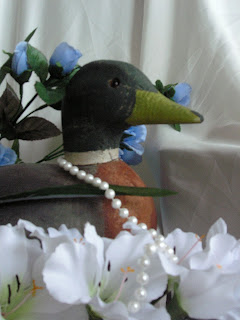Ok, so most people look at still life pictures, paintings, or photography as just a grouping of stuff. And they would be wrong. Still life is a way for an artist to practice or implement pure design. There are elements of art to consider, line, shape, texture, color, form, value, and space. These are the basic building blocks to any artwork. Any picture can have any one or more of these things, but that doesn't necessarily make something Art. A preschooler's scribble isn't Art, but it may have line, shapes, and color.
 |
Simple, clean, and although a bit bare
it still has contrast and proportion, and strong
linear elements that direct your eye in the picture. |
What defines artwork from the mundane is the use of principles of design. These are balance, proportion, emphasis, unity, harmony, contrast, movement, variety, rhythm. With these tools the more you use in a considered and deliberate way, generally the more interesting and enjoyable the work. Art can seem fairly simple, but when you look at a piece of work that captures your attention, see how many principles of design are in play.
 |
This is a little better, there is definite contrast
and rhythm in the blue flowers. |
Design can be applied to most things, including all things even remotely Art related. To give you an example I taught myself to knit, and learned an unusual textural detail, and I was able to create a pattern of contrasting details which was done rhythmically. And that was just knitting.
 |
Dynamic shadows create
their own shapes. |
Photography is an effective means of testing designs, and creating Art. And among the various genres like portraiture, landscapes, abstracts, and still life, still life is under appreciated for it's value as Art. Often times I get the impression from people that it is considered decorative. Art should have some meaning to the artist, and it should be well designed. Take for example the decoy. To me it has history, it has been used by one of my clients' father, it has a past. And contrast that with flowers which are considered decorative, or possibly transient, there is a subtle irony. Throw in a string of pearls which are supposed to be the pinnacle of style and grace, you elevate the humble decoy to a new level of irony. There is a contrast that is symbolic, and shows a sense of humor. Does everyone get it? No way! But it is something that has meaning to me as the artist, and that's what matters. And that level of symbolism and meaning takes the still life from decorative to the realms of Art.
A Study in Contrasts- Silk and pearls with a decoy and flowers
Will everyone agree with me? Nope, but part of the nature of Art is to evoke a response, be that emotional, or controversy, and as long as that is achieved, then it has done its job.
















































